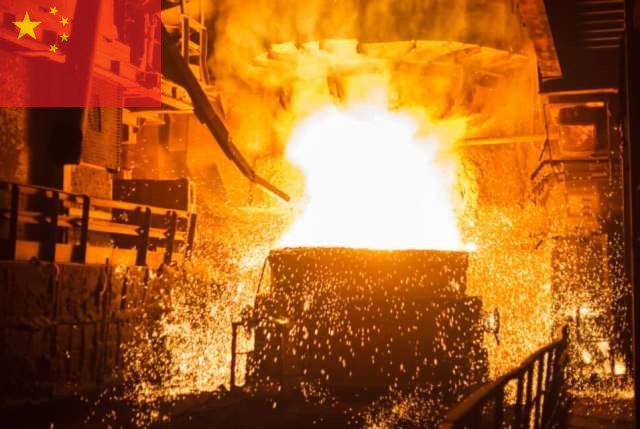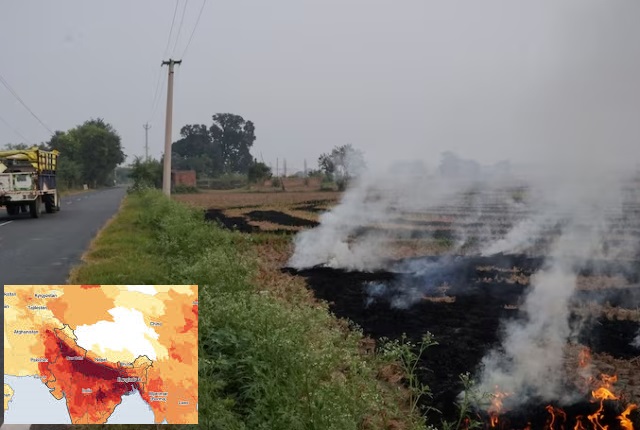
China’s Growing Appetite For Steel
As the pressure of decarbonisation mounts and the demand for clean (better to say green) steel grows across the world, the compulsion of steelmakers to procure iron ore with very high fe (iron) content and low impurities such as alumina and silica will continue to grow. But it is becoming increasingly challenging to get ore with 64 per cent and more iron in it in big volumes. Iron ore is the principal feedstock of steel produced through the blast furnace-basic oxygen furnace (BF-BOF) route.
Even while serious attempts are made to improve circularity in the steel industry by enhancing electric arc furnace (EAF) capacity in the West, China and India, McKinsey says in a report that the share of “crude steel from the BF-BOF route is expected to drop from around 70 per cent to around 60 per cent between 2023 and 2035.” Circularity happens through the use steel scrap in EAF. In India, Tata Steel MD & CEO TV Narendran is championing the cause of circularity.
At the same time, says the McKinsey report presented at the recent Delhi conclave of Indian Steel Association, the global steel use during this period is estimated to rise to 1.95 to 2 billion tonnes from 1.764 billion tonnes. This being the reality, the article will discuss how desperate China, which had a 54 per cent share of global steel production of approximately 1.888bn tonnes in 2023, has become to acquire iron ore deposits and open new mines in offshore lands in Africa and elsewhere, defying all challenges.
China has quite a large iron ore resource. But the ore quality is poor and becoming increasingly worse as raisings show. Along with resources acquisitions, China is investing heavily in building roads, rail tracks and ports in overseas virgin mining centres to evacuate ores efficiently and cost effectively.
China’s quest for minerals abroad is not restricted to iron ore and bauxite (the latter for making aluminium in which China is by far the world’s largest producer). Driven by an unquenched thirst, the country has been seen splurging money in buying virtually all kinds of natural resources, including rare minerals found anywhere in the world. Though not yet admitted, Beijing is using belt and road initiative to entice many struggling economies but with rich mineral resources to let China open mines there. Africa and South America are the two continents where China is found particularly aggressive in picking up mineral assets.
In a politically unstable country like Guinea with a high degree of corruption and widespread militancy, China is almost in final stages of opening a very large iron ore mine where the deposit quality is among the best in the world. That Chinese companies like their counterparts in the West will often resort to unfair ways, including bribing ministers and bureaucrats are an open secret.
China’s progress in buying mineral assets, particularly critical minerals, including rare earth elements in Africa is viewed with concern by the US and EU. When the West and also Japan are seeking to pare their dependence on supplies from China, Benchmark Mineral Intelligence has estimated that more than 90 per cent of Africa’s forecasted lithium supply in 2024 will come from projects at least partly owned by Chinese companies. In cobalt and copper, China also owns substantial stakes in mines in the Democratic Republic of Congo. The concerned US and the EU not only got into the act of buying mineral assets in Africa late but unlike China they are found slow in concluding deals. In the meantime, iron ore features quite high among commodities dominating seaborne trade in terms of volume and also value.
China, which is by far the world’s largest importer of iron ore required to run the BF-BOF segment of its giant steelmaking industry presents analysts with the riddle surrounding continuing arrivals of the raw material at Chinese ports in high volumes in the face of steel production fall. The country’s imports of iron ore in this year’s first eight months up to August were up 5.2 per cent year-on-year to 814.95m tonnes. Analysts say the country will continue to import monthly around 100m tonnes, helped by global supply glut. But in the first seven months of 2024 (August figures are awaited), production of crude steel was down 2.2% to 613.7m tonnes.
No wonder then inventories of the steelmaking ingredient at Chinese ports are sitting at elevated levels vis a vis established seasonal norms. The riddle becomes even more tricker by high summer ore imports when mills routinely apply brake in capacity use in response to steel demand fall from construction and housebuilding sector.
Beijing based consultants SteelHome says in a report port stockpiles of ore have been rising steadily since reaching a seven-year low of 104.9m tonnes in the final week of October. Underlining the continuing strength in imports, monthly port stockpiles are showing an average gain of 6.06m tonnes. SteelHome informs Chinese ore inventories across ports as of July 26 rose 1.47% week-on-week. Even then inventories will have to climb further before they hit the May 2018 record high of 160.6m tonnes. China being an importer of such big volumes of iron ore, there inevitably is a strong correlation between ore prices globally and going beyond what it buys to actual end use. What automatically follows is that if iron ore keeps accumulating at ports and also with steel mills beyond certain volumes, prices of the raw material will come under pressure.
Take Singapore Exchange where ore with 62% contained iron hit an 18-month high of $143.60 a tonne On January 3 and since then the market is facing headwinds. Expectedly, the causes of iron ore bearishness are mostly on account of the woes of the Chinese economy and that includes insufficient domestic demand for steel and falling prices eroding margins of steelmakers. For instance, China’s gross domestic product decelerated to 4.7% on the year in the second quarter in 2024 from 5.3% in the January-March quarter. Moreover, the country’s factory activity contracted for a third straight month in July, leaving the economy in a weak trajectory.
The official manufacturing purchasing managers’ index for July was 49.4 according to China’s National Bureau of Statistics. The number was slightly worse than June reading. A Singapore based iron ore merchant trader visiting India told DCI: “We hope following the recent Chinese Communist Party politburo meeting, President Xi Jinping would turn the focus on boosting consumption to combat ‘insufficient domestic demand.’ The major challenge is to revive the real estate sector and fund infrastructure development through appropriate stimulus. All this will generate domestic demand for the steel industry and in turn for iron ore.”
Every time there is a dip in ore prices, buying for delivery to China sees a spurt and that explains the relentless accretion in port stocks all this while. Chinese steel industry’s working experience says profits become elusive once iron ore costs more than $100 a tonne. Now production and demand are down, steel prices are agonisingly low and mills in order to avoid growth in factory stockpile of steel products have turned into aggressive exporters allegedly often at below production cost. In the given circumstances, high ore imports by China could be either in anticipation of the government announcing at some point stimulus measures for the real estate sector or this could be yet another instance of part of national strategy to support build-up of inventories of a number of commodities, especially the ones with high import dependence.
(This is the first segment of a two-part series on the subject. For the second and concluding part of the article, click here)
For more details visit us: https://lokmarg.com/



